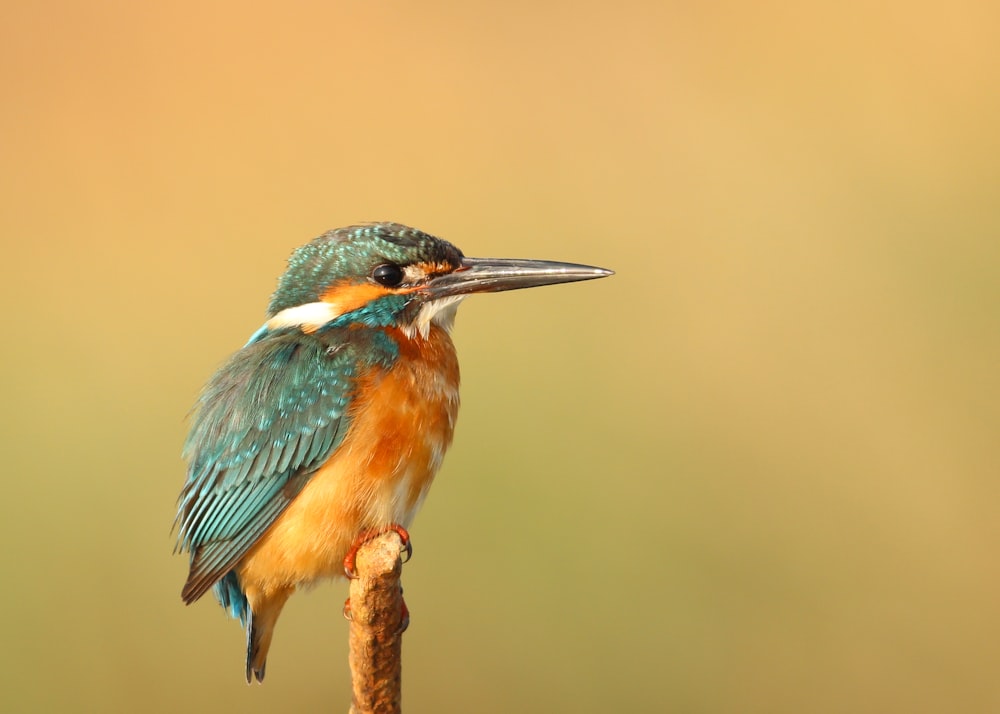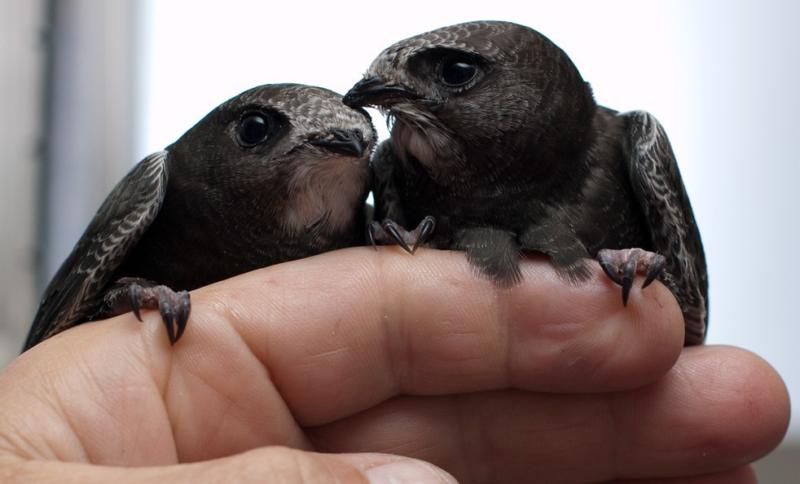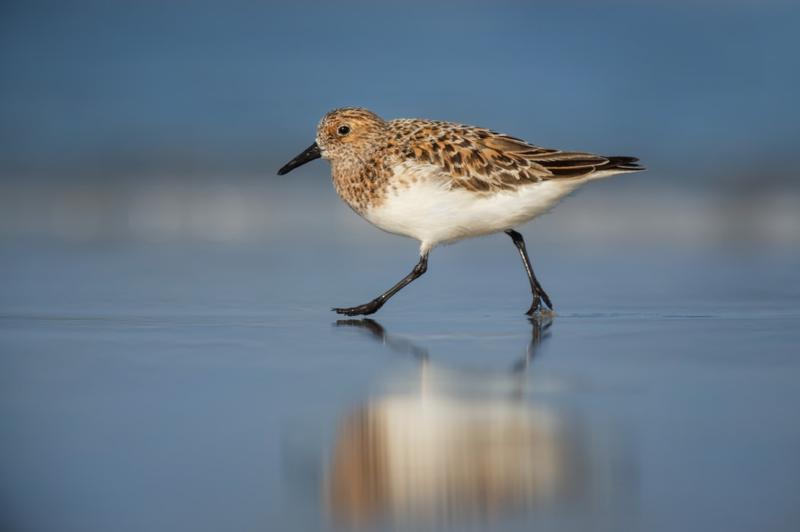Maybe you have heard about birds that are not able to fly, but have you ever considered that there are also birds that cannot walk?
Whereas many birds, such as the ostrich, the kiwi bird or penguin, have adapted so well to a life without flying that they lost their ability to do so, other birds have actually lost their ability to walk! These birds are: Swifts, Loons, Grebes, Kingfishers and most hummingbirds.
Birds are fascinating animals and it is always surprising to me how diverse and specialized they are.
Birds are not only masters of the airspace but also extremely good swimmers, divers and runners.
In this post, we will look into the phenomenon of bird specialisation to the point where they do not need their ability to walk anymore!
Common to these 5 types of birds is that they lost their ability to walk, because they are very good at transporting themselves in other manners – these birds are all super good flyers or swimmers!
I will take you through these fascinating birds in this post.
Contents
1. Loons
Loons are water birds with a size in between ducks and geese. They are so well adapted to water that their legs are no longer suitable for walking on land.
Their legs are placed much further back on their body than most other birds, which makes them excellent for fast propelling in water and means less air resistance when flying.

Loons are mostly present in the Northern parts of the US and in Canada, where they are mostly present in lakes and rivers in spring.
The most common species in the US and Canada are:
- Common loon
- Yellow-billed loon
- Pacific loon
- Red-throated loon
- Arctic loon
Loons, like grebes, are hardcore waterfowl, meaning that they spend pretty much all their life in the water. They are excellent divers and their entire anatomy is optimized for their life in water. Their red eyes help them see their fish prey when diving and they can hold their breath for up to five minutes.
Apart from being good swimmers and divers, loons are also very good at flying and they can reach flying speeds of up to 70 miles pr. hour (112km/h).
2. Grebes
Like loons, grebes are water fowl that need to swim and dive fast to escape predators and catch their prey.
Therefore, just as loons, the legs of grebes are placed far back on the body so that they can propel the bird forward without compromising the aero/hydro dynamics. This placement of the legs is the main reason why grebes have a very hard time walking.
Some of the most common grebes in North America are:
- Pied-billed Grebe
- Horned Grebe
- Western Grebe
- Red-necked Grebe
- Least Grebe
What are the differences between grebes and loons?
Grebes and loons were once thought to be closely related. However, this has since been shown through genetic comparison (DNA sequencing) to not be the case and that grebes and loons have very different evolutionary histories.
It is rather believed that both grebes and loons have become similar by acquiring the same abilities because they have adapted to the same environment (convergent evolution).
Grebes are smaller than loons with the latter sometimes being confused with cormorants. Whereas both have relatively narrow wings compared to their body size, loons are the better flyers and some grebe species do not fly at all.
Another important difference between grebes and loons, and the easiest way to tell them apart, is that the feet of loons are webbed whereas the feet of grebes are lobed. That is, the feet of loons are more like ducks and geese, whereas the toes of grebes look like small paddles – the same type of feet other water fowl such as the Coot.
Interestingly, one of the closest bird species to grebes are flamingos! In fact, flamingos are the only other water birds that share close ancestry with grebes. And they have webbed feet!
Rare footage of grebe attempting to walk
Although it is not easy for a grebe to walk, there are short video clips catching the staggered walk of a grebe using its wings to keep balance:
3. Kingfishers
The kingfisher is a small colourful bird that, as its name implies, is very good at catching fish!
The kingfisher is found all over North America but many species are found throughout the world, especially the warmer parts. Most are found at lakes and rivers, but some are adapting to a more urban life style and may be spotted near backyards ponds.
The kingfishers have very short legs that are adapted to sit on branches, watching for prey, rather than moving around and therefore not suitable for walking.
Because the legs are so small and their feet curved to match the curvature of branches, they would have to move their legs extremely fast to move significant distances.

Luckily, the flight abilities of kingfishers are adequate for transportation and they are agile enough to reach most spots without the need for walking.
When they collapse their wings and fold in their legs, in a classical bullet formation, they can fly up to 30mph (almost 50 km/h) to catch unknowing fish in the water surface.
4. Swifts
Swifts such as the Black Swift, the White-throated Swift and Vaux’s Swift are native to the US and Canada, and are among the best fliers in the animal world. And no wonder – they do it all the time!
In fact, swifts are so good at flying that they can stay in flight for months at a time – and often do so! That is, they sleep, mate and feed while flying. The only time they stop to rest is when they nest.
Just like the kingfishers and hummingbirds, the legs of swifts are almost nonexistent and they are not adapted to standing or walking on the ground and you will rarely see a swift use its legs at all.
Swifts are highly adapted to a lifestyle of constant flying and catching insects, which is why they are rarely seen on ground.
However, they do stop for a while to build their nests – which is build entirely from their own saliva!
Some even claim that swifts cannot take off if they accidently land on the ground. However, this is only true if the ground is not a clean and solid surface where they cannot freely move their wings to get momentum.
With so much air time, it does seem more reasonable that the legs of swifts are not further developed as they have no need for them most of the time!

It is commonly believed that swifts are closely related to swallows and martins due to their similar lifestyle.
However, while not marathon runners, martins have much more developed leg structures and often take time to sit on a branch or rooftop to rest.
Interestingly, swifts are actually much closer relative to hummingbirds, which does show in their physiology and we will look into these floating nectar suckers next!
5. Hummingbirds
Hummingbirds, like swifts, are much more adapted to flying than any other means of movement. They depend on their fast wing movements and highly precise manoeuvring to collect nectar.
They are so good at flying that they are the only birds able to fly backwards!
Hummingbirds may use their legs for fighting and sitting on different structures such as bird feeders, nests or wires, but they are rarely seen walking.
The legs of hummingbirds, not unlike the legs of swifts, are short and weak with disproportionately large feet.
Although able to support the modest weight of the hummingbird, the legs are too short for any real walking to take place.
The ability of hummingbirds to walk is slightly controversial and there are videos showing their shuffling movement across very flat surfaces:
Concluding remarks
It is always a bit hard to judge abilities, such as walking, in a binary (yes/no) manner.
Because evolution does not happen from one day to another, there will always be remnants of abilities that are basically on their way out – quite similar to our appendix, wisdom teeth and tail bone.
This does not mean that these features are active parts of our biology!
Simmilarly, as we have seen in the videos of the hummingbird or grebes above as examples where a bird has lost the need to walk, but it can still clumsily shuffle short distances, although not something they particularly enjoy doing.
Backyard birds in the United States
Are you interested in how the backyard birds in your state compare to other states?
Then check out my other blog posts below:
- Backyard birds of Alabama
- Backyard birds of Colorado
- Backyard birds of Delaware
- Backyard birds of Georgia
- Backyard birds of Hawaii
- Backyard birds of Illinois
- Backyard birds of Iowa
- Backyard birds of Kentucky
- Backyard birds of Louisiana
- Backyard birds of Maryland
- Backyard birds of Massachusetts
- Backyard birds of Missouri
- Backyard birds of Nebraska
- Backyard birds of New York
- Backyard birds of North Carolina
- Backyard birds of Oklahoma
- Backyard birds of Rhode Island
- Backyard birds of South Carolina
- Backyard birds of Tennessee
- Backyard birds of Texas
- Backyard birds of Virginia
- Backyard birds of West Virginia
- Backyard birds of Wisconsin
- Backyard birds of Wyoming
And in Canada:
- Backyard birds of Ontario
- Backyard birds of Prince Edward Island
- Backyard birds of Saskatchewan
- Backyard birds of Quebec
Not on the list? Check out the rest of my posts on backyard birds here!
Maybe you would like to know if the Blue Jay or Cardinal dominates in the bird feeder hierarchy or how birds such as seagulls sleep at night? Or why mourning doves poop so much.






